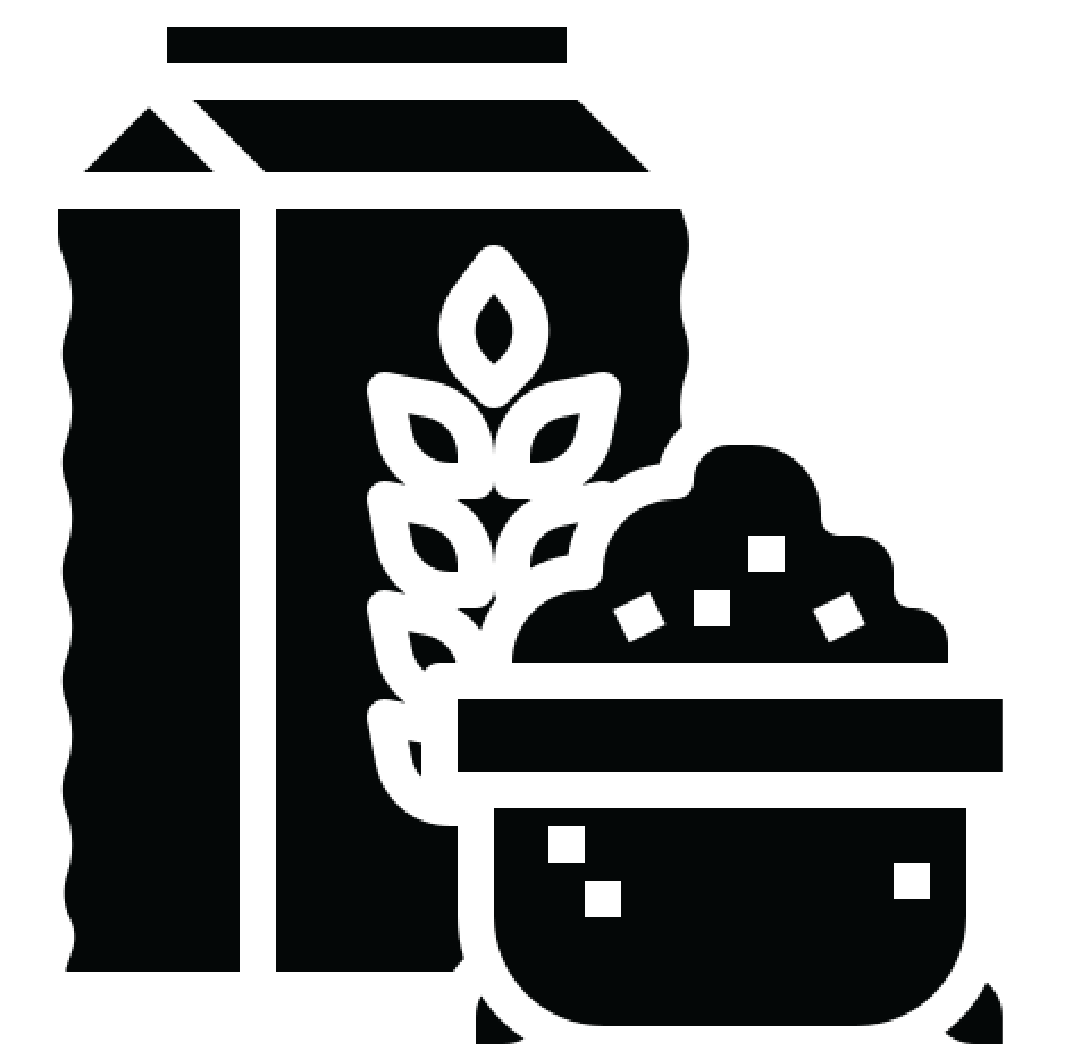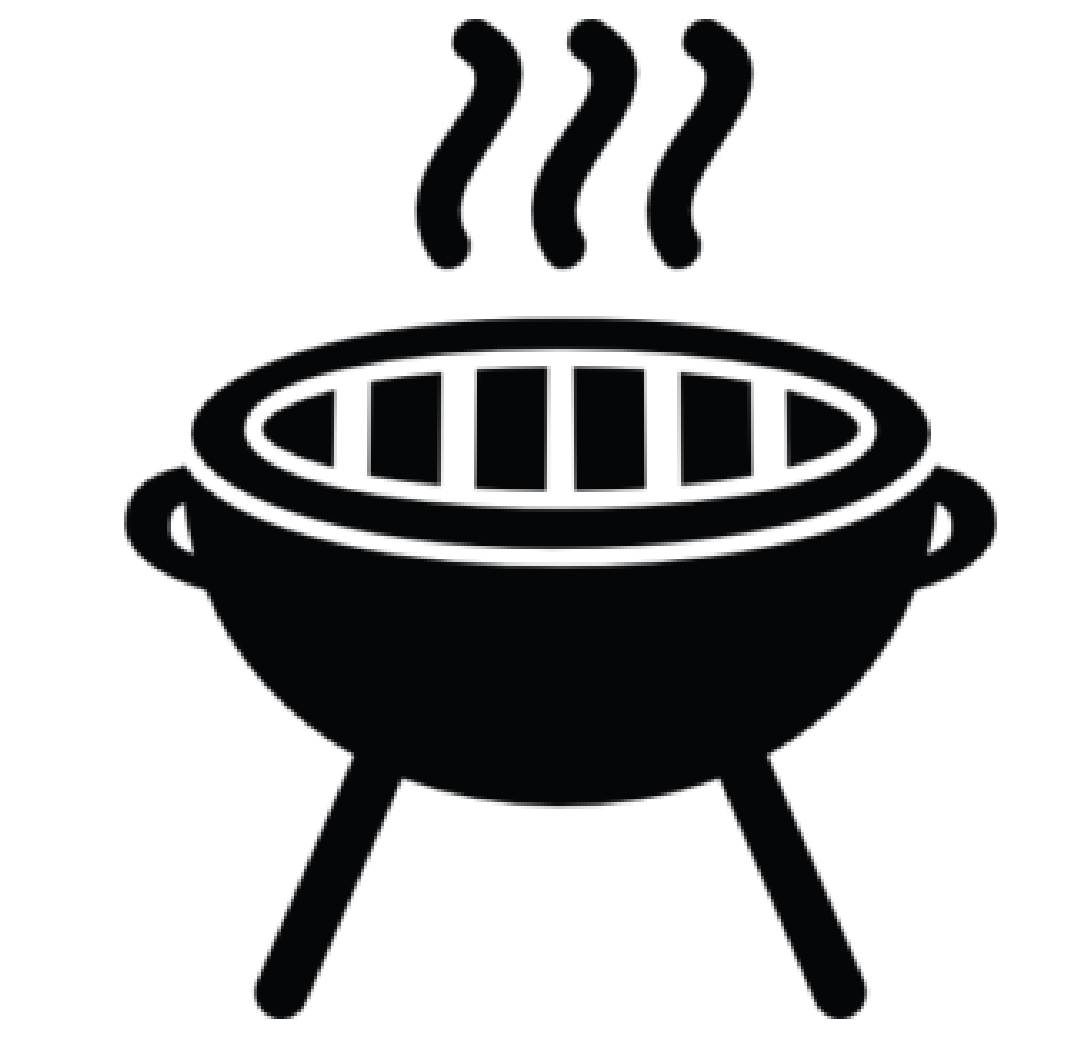

Carbon Footprint Of
Our Food System
食物系統的碳足迹
The various sets of data compares the environmental and carbon footprint information relating to popular Chinese dishes in the UK. They are gathered as part of Low Carbon Chinatown by artist & designer Ling Tan, over several years of working with data scientists, cultural organisations, UK-based East & Southeast Asian communities, food writers and chefs. Click on the different buttons to explore the information.
Carbon footprint data used here draws from several sources and is meant simply to provide a general understanding of relative impact.
Carbon Footprint Of Common Chinese Food Ingredients
常用中华食品成分的碳足跡
Carbon Footprint Ranking | 碳足跡排名
All carbon footprint units are kgCO2eq per kg unless otherwise specified.
Protein | 肉类
 1 portion of beef fillet steak | 牛肉 (90g) Highest | 最高
1 portion of beef fillet steak | 牛肉 (90g) Highest | 最高
 1 portion of lamb meat | 羊肉(90g)
1 portion of lamb meat | 羊肉(90g)
 1 portion of prawns, frozen | 冷冻虾(90g)
1 portion of prawns, frozen | 冷冻虾(90g)
 1 portion of salmon fillet, frozen | 冷冻鲑鱼 (140g)
1 portion of salmon fillet, frozen | 冷冻鲑鱼 (140g)
 1 portion of pork chops | 猪排 (90g)
1 portion of pork chops | 猪排 (90g)
 1 portion of duck |鸭肉 (90g)
1 portion of duck |鸭肉 (90g)
 1 portion of chicken |鸡肉 (90g)
1 portion of chicken |鸡肉 (90g)
 1 portion of tofu | 豆腐 (100g) Lowest | 最低
1 portion of tofu | 豆腐 (100g) Lowest | 最低
This approximate comparison uses carbon footprint per 1 portion of food ingredient. Generally speaking, the protein will be among the highest carbon footprint food items on the plate, by a large margin. Note that body part, type of processing, and cooking method may change the footprint – e.g. beef ribeye has a higher footprint than beef sirloin; pork bacon is higher than pork mince. Source: Portion sizes from Association of UK Dietitians aggregated by FT Carbon Food Labeling, carbon footprint per portion from the same source. Duck value from the Chinese Food LCA database/ Cai et al. 2022.
Vegetables | 蔬菜类
 1 portion of tomatoes | 番茄 (80g) Highest | 最高
1 portion of tomatoes | 番茄 (80g) Highest | 最高
 1 portion of bamboo shoots | 竹笋 (80g)
1 portion of bamboo shoots | 竹笋 (80g)
 1 portion of mushrooms | 蘑菇(80g)
1 portion of mushrooms | 蘑菇(80g)
 1 portion of carrots | 萝卜(80g)
1 portion of carrots | 萝卜(80g)
 1 portion of onions | 洋葱(80g)
1 portion of onions | 洋葱(80g)
 1 portion of cabbage | 卷心菜 (80g)
1 portion of cabbage | 卷心菜 (80g)
 1 portion of cauliflower | 菜花 (80g) Lowest | 最低
1 portion of cauliflower | 菜花 (80g) Lowest | 最低
This approximate comparison uses carbon footprint per 1 kg of food ingredient, though one portion is rarely 1 kg. Generally speaking, the vegetable will be among the lowest footprint food items on the plate, though not as low as any starches. E.g. Steaming tomatoes on the hob, the highest footprint way of cooking them, is still more than ten times lower in total footprint per kg than slow cooking beef, the lowest footprint way of cooking beef. Source: Portion sizes estimated from FT Carbon Food Labeling, carbon footprint from pre-consumption values Frankowska et al. 2020; the Chinese Food LCA database/ Cai et al. 2022 for bamboo shoots value.
Starch | 淀粉类
 1 portion of cooked white rice | 未煮过的白米饭 (200g) Highest | 最高
1 portion of cooked white rice | 未煮过的白米饭 (200g) Highest | 最高
 1 portion of boiled potato | 煮土豆 (120g)
1 portion of boiled potato | 煮土豆 (120g)
 1 portion of uncooked Brown rice | 未煮过的糙米 (75g)
1 portion of uncooked Brown rice | 未煮过的糙米 (75g)
 1 portion of uncooked wheat flour | 面粉 (120g)
1 portion of uncooked wheat flour | 面粉 (120g)
 1 portion of uncooked Glutinous rice | 未煮过的糯米 (75g)
1 portion of uncooked Glutinous rice | 未煮过的糯米 (75g)
 1 portion of uncooked Egg Noodles | 生鸡蛋面 (50g)
1 portion of uncooked Egg Noodles | 生鸡蛋面 (50g)
 1 portion of steamed plain bun | 蒸馒头 (50g) Lowest | 最低
1 portion of steamed plain bun | 蒸馒头 (50g) Lowest | 最低
This approximate comparison uses carbon footprint per 1 kg of food ingredient, though one portion is rarely 1 kg. Generally speaking, the starch will be among the lowest carbon footprint food items on the plate. Note that the cooking method may change the footprint – e.g. stirring dried potato powder and hot water will increase footprint to be as high as polished rice. Source: the Chinese Food LCA database/ Cai et al. 2022 for cereals comparison (the academic term for rice, noodles, bread etc) comparison, we used steamed bread value for steamed plain bun, and polished rice for white rice; Frankowska et al. 2020 for cooked white rice (using electric pressure cooker for cooked) and potato values; and Xu et al. 2020 for potato vs rice comparison.
Seasoning | 调味料
 1 teaspoon (4.2g) of palm oil Highest | 最高
1 teaspoon (4.2g) of palm oil Highest | 最高
 1 teaspoon (4.2g) of olive oil
1 teaspoon (4.2g) of olive oil
 1 teaspoon (4.2g) of sunflower oil
1 teaspoon (4.2g) of sunflower oil
 1 teaspoon (4.2g) of soy sauce
1 teaspoon (4.2g) of soy sauce
 1 teaspoon (4.2g) of sugar Lowest | 最低
1 teaspoon (4.2g) of sugar Lowest | 最低
Sources are CarbonCloud for soy sauce in glass bottle, Poore et al. 2018 for oils, and Cai et al. 2022 for sugar.
Carbon footprint data used here draws from several sources and is meant simply to provide a general understanding of relative impact. | 這裡使用的碳足跡數據來自多個來源,只是為了提供對相對影響的一般理解。
On Farmed Vs Wild-caught Fish | 养殖与野生捕捞的鱼
• Farmed fish on average may be a little bit lower, but it's not conclusive whether a fish has a higher/lower footprint just purely if wild-caught vs farm-raised.
• The main cause of carbon footprint for fish farming is feed, whereas for wild caught it is fuel eg ships.
• Wild-caught is a really wide category, so the confidence bands are high-- so I imagine the lowest would be hook and line from a local fisherman, and highest would be a fishing tanker.
• Generally speaking, farmed salmon very likely has less footprint than chicken, whereas wild salmon may also have less footprint than chicken but this is less certain. Depends on what type of wild.
• Source is Fig 1 from Gephart 2021 (5.1 kgCo2eq/kg for farmed salmon and 6.9 for wild -- the beige band is chicken). Their method is simplified LCA.
Carbon Footprint Of Cooking Methods
烹饪方法的碳足跡
Carbon Footprint Ranking | 碳足跡排名
Electrical/Gas Consumption Based on Cooking A Portion of Chicken | 烹制一份鸡肉的电/气消耗量
 55 min of roasting or baking in the oven Highest | 最高
55 min of roasting or baking in the oven Highest | 最高
 41 min of broiling or grilling in the oven
41 min of broiling or grilling in the oven
 45 min of boiling on the stove
45 min of boiling on the stove
 40 min of steaming (gas hob)
40 min of steaming (gas hob)
 34 min of deep frying (gas hob)
34 min of deep frying (gas hob)
 34 min of deep frying (electric)
34 min of deep frying (electric)
 20 min of shallow frying on stove
20 min of shallow frying on stove
 40 min of steamer (electric)
40 min of steamer (electric)
 20 min on an electric grill (eg Foreman)
20 min on an electric grill (eg Foreman)
 52 min in a slow cooker Lowest | 最低
52 min in a slow cooker Lowest | 最低
Electrical/Gas Consumption Based on Cooking A Portion of Pork | 烹制一份猪肉的电/气消耗量
 60 min of roasting or baking in the oven Highest | 最高
60 min of roasting or baking in the oven Highest | 最高
 62 min of Steamer (hob)
62 min of Steamer (hob)
 31 min of Toast, broil, or grill in the oven
31 min of Toast, broil, or grill in the oven
 41 min of Deep fry (hob)
41 min of Deep fry (hob)
 41 min of Deep fry (electric)
41 min of Deep fry (electric)
 62 min of Steamer (electric)
62 min of Steamer (electric)
 18 min of Shallow fry on stove
18 min of Shallow fry on stove
 71 min of Slow cooker
71 min of Slow cooker
Electrical/Gas Consumption Based on Cooking A Portion of Rice | 烹调一份米饭的电/气消耗量
 20 min of pressure cooker (gas hob) Highest | 最高
20 min of pressure cooker (gas hob) Highest | 最高
 19 min of steamer (gas hob)
19 min of steamer (gas hob)
 15 min of boiling on the stove
15 min of boiling on the stove
 20 min of pressure cooker (electric)
20 min of pressure cooker (electric)
 19 min of steamer (electric)
19 min of steamer (electric)
 5 min of microwave
5 min of microwave
 21 min of slow cooker Lowest | 最低
21 min of slow cooker Lowest | 最低
Carbon footprint data used here draws from several sources and is meant simply to provide a general understanding of relative impact. This approximate comparison uses the carbon footprint contribution, per kg of cooked food, that cooking is responsible for, taking into account cooking time for the type of food. Generally, if the cooking appliance has an option between hob and electric – e.g. steamer, pressure cooker, deep fry – the hob version would incur higher footprint than electric. Source: Frankowska et al. 2020
On Gas Vs Electricity Hobs | 燃气灶与电灶
• Gas is slightly cheaper £17/yr, electric hob is £40/yr if you run it 5 hrs a week (source: Which? September 2022)
• but electric hobs are easier to clean, distribute more even heat, and gas is becoming more expensive
• gas is "cleaner than coal, but still bad for the environment", gas hobs may soon be banned from being installed in new UK homes like the Netherlands (source: BBC) smart meters and grid management can reduce running costs of electrical heating (source: ECA)
• gas is "cleaner than coal, but still bad for the environment", gas hobs may soon be banned from being installed in new UK homes like the Netherlands (source: BBC) smart meters and grid management can reduce running costs of electrical heating (source: ECA)
• estimated 49% of UK have a gas hob (source: survey 2020) 46% have an electric hob; whereas 85% have a microwave oven, 50% have a slow cooker, 37% have a electric eg Foreman grill
• right now, the biggest single energy source entering the Grid is still gas (source: National Grid, Sheffield uni energy dashboard).
• Renewables, which excl nuclear, generated 45.5% of electricity in June 2022 (source BEIS gov.uk), the highest record was 47.1% in 2020 Q1 when the UK experienced exceptionally high wind speeds
• the main big actions are around the oven: don't preheat for longer than needed, thaw/defrost food with microwave, only use oven if can be used efficiently (using up different shelves), if you're replacing the hob, go with electric. Also: use a pot lid, cook foods in pots that are full to capacity (sources: various 1,2,3,4)
• cooking is about 6.1% of household energy consumption (source: Eurostat); many actions that cut carbon footprint also save bills.
Carbon Footprint Of Sourcing Ingredients
采购食品的碳足跡
Carbon Footprint Ranking | 碳足跡排名
Sourcing Of Ingregients | 原料采购
1.  Buying from Chain Supermarket (e.g Sainsbury) | 從連鎖超市購買(例如 Sainsbury)Highest | 最高
Buying from Chain Supermarket (e.g Sainsbury) | 從連鎖超市購買(例如 Sainsbury)Highest | 最高
2.  Buying From Your Local Grocer | 從您當地的雜貨店購買
Buying From Your Local Grocer | 從您當地的雜貨店購買
2.  Buying Online From Dedicated Online Supermarket (e.g Ocado) | 從專門的在線超市在線購買(例如 Ocado)
Buying Online From Dedicated Online Supermarket (e.g Ocado) | 從專門的在線超市在線購買(例如 Ocado)
3.  Buying A Tote Bag to Carry Groceries | 買一個手提袋來攜帶雜貨
Buying A Tote Bag to Carry Groceries | 買一個手提袋來攜帶雜貨
4.  Re-using Plastic Bags From Home to Carry Groceries | 重複使用家裡的塑料袋來攜帶雜貨 Lowest | 最低
Re-using Plastic Bags From Home to Carry Groceries | 重複使用家裡的塑料袋來攜帶雜貨 Lowest | 最低
On Food Source | 关于食物的来源
• Scientific consensus has been that food transport is not a major contributor to emissions, compared to what you eat eg Poore 2018 and Ritchie's data viz
• Some also argue "food miles" is not a helpful concept -- as it stresses distance, when mode of transport is more important. E.g Same distance by seas is lower footprint than same distance by road (source: Coley 2011)
• More recently, the food miles debate has surfaced again: there is a Nature food paper 2022 which is "a significant deviation from the former scientific mainstream opinion that transport is no major contributor to emissions from the food system"
• They measures food miles in a different way: looks at transport of "everything upstream, from fertilisers to pesticides to machinery" (twitter thread from Ritchie)
• main suggestion from that lead author: eat local/ seasonal ("localising food supply still leads to emissions reductions”, but adds: “For consumers, in addition to shifting towards a plant-based diet, eating local seasonal alternatives is ideal, especially among affluent countries.” source: carbonbrief)
• Food miles is a useful data point (frequently printed on labels), but what matters as much is the mode of transport. The same distance by air incurs the highest footprint, followed by sea, then road (HGVs) and finally local food has the lowest footprint. Eat local, eat seasonal if you can! Source is Coley 2011.

Low Carbon Chinatown is a project by Ling Tan, originally commissioned by Kakilang.
Leeds Low Carbon Chinatown is commissioned by Compass Festival.
Hackney’s Low Carbon Chinatown is supported by the Climate Team in Hackney Council and public funding by the National Lottery through Arts Council England.
With contributions from data scientist Raphael Leung, climate scientist Dr Alice Garvey, climate economist Catherine Chong, food writers MiMi Aye, Uyen Luu and Shu Han Lee, chef Neil Eakapong, designer Usman Haque, production support Nick Murray, Holly Gibbs & Jennie Gilman, fabricator Gary Campbell and Studio Makecreate, structural engineer Atelier One, community film participants Man Chiu Leong, Bei Gao, Haojin Wang & Stephen Wong.
With support from Arts Council England, Compass Festival, Manchester Museum, Barking Riverside, Royal Docks, Growing Communities, Gainsborough Primary School and MadLeap. With community support from London Chinese Community Centre, Hackney Chinese Community Centre, Newham Chinese Association, Mafwa Theatre, Lincoln Greeners, Lychee Red Chinese Seniors & Gainsborough Primary School.
